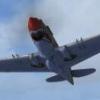
Sign in to follow this
Followers
0

Configuring new SSD drive.
By
Fielder, in System Hardware: PC | MOBO | RAM | CPU | HDD | SSD | PSU etc


By
Fielder, in System Hardware: PC | MOBO | RAM | CPU | HDD | SSD | PSU etc